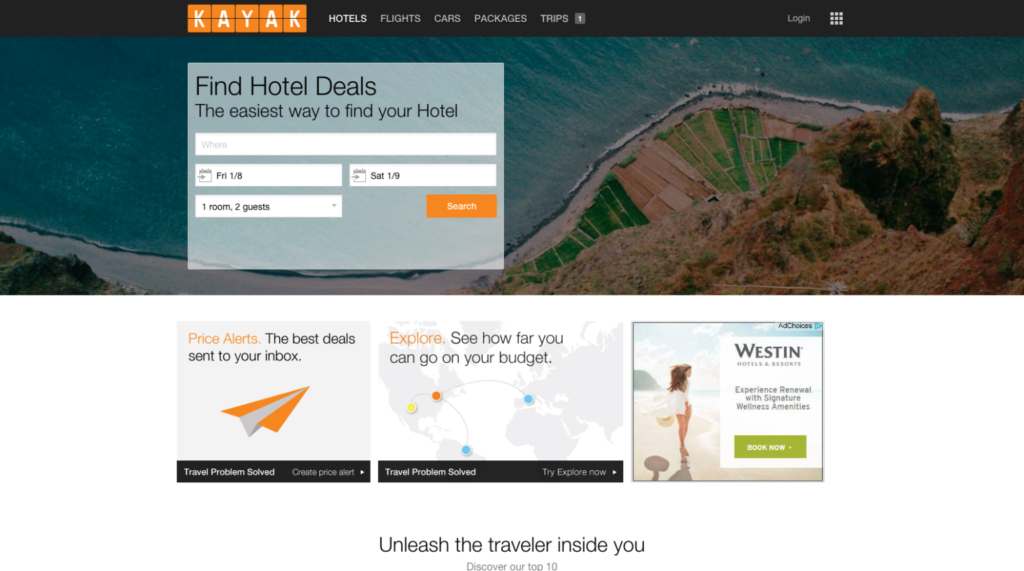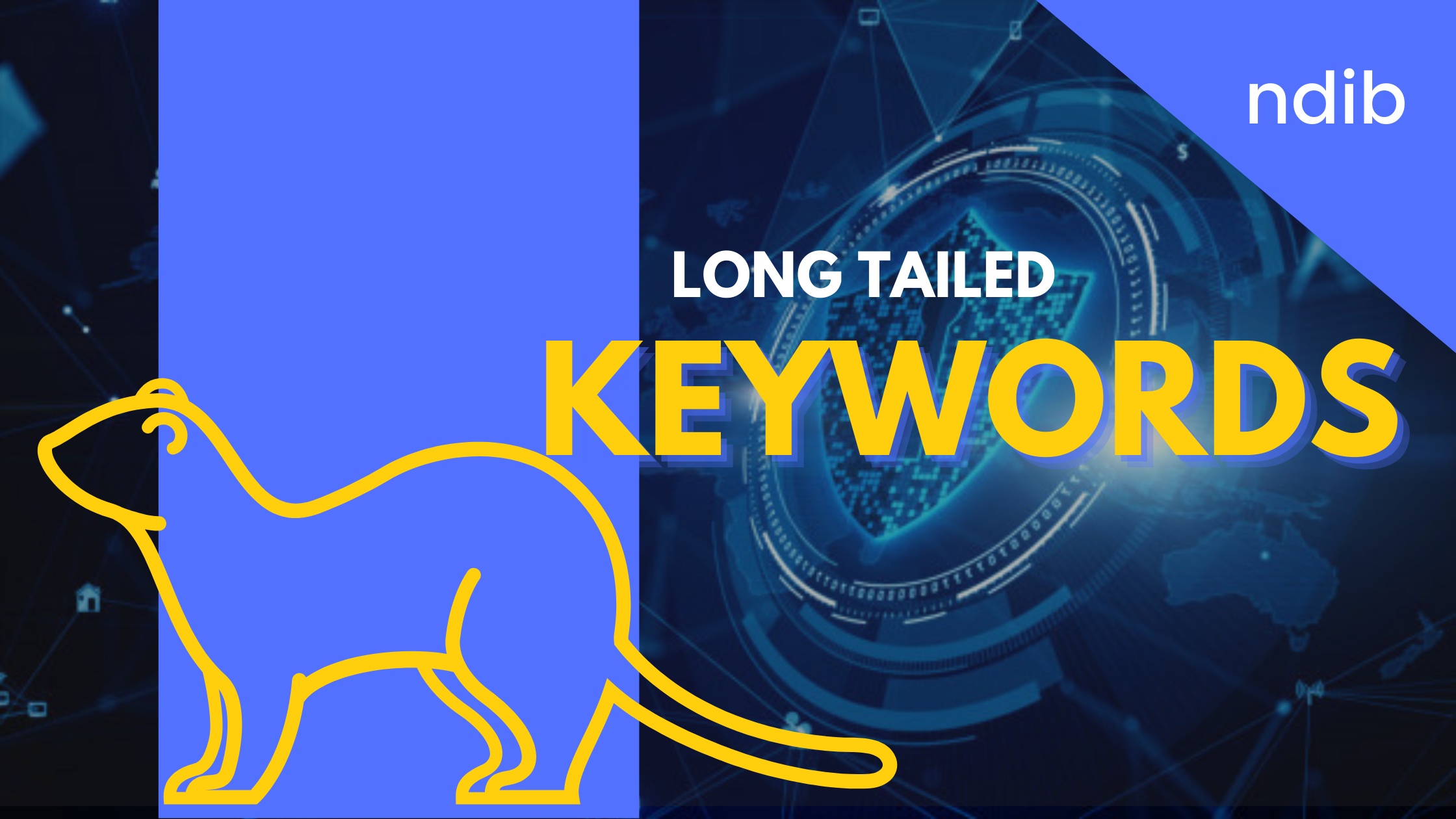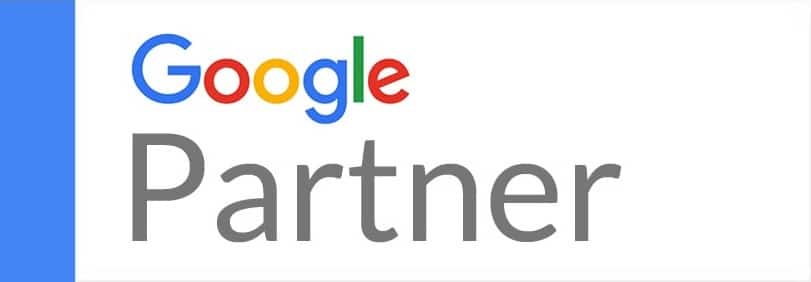You have probably heard talk about long tailed keywords in PPC – they are mentioned in all the major blogs from PPC Hero to Search Engine Journal.
In fact, it feels like I can’t read or see anything without them being mentioned….long tailed keywords are basically the Kardashian’s of the search engine marketing world.
Many search engine marketing blogs discuss how to research them (long tailed keywords – not the Kardashian’s) such as:
- Backlinko
- WordStream
- Yoast (which also provides an excellent SEO plugin that we use here at NDIB)
Yet, few if any of these blogs discuss what to actually do with these long tailed keywords in pay per click once they have been uncovered.
Most of these blogs focus only on researching them, which leaves you wondering – what do I do once I find them?
This blog post aims to help you use long tailed keywords for PPC so that you can maximize your revenue in your Google Ads campaigns.
What is the Long Tail?

The term long tail was originally coined by Chris Anderson (who also founded the tech magazine Wired) in his book, which was appropriately titled The Long Tail.
The premise of the book is:
- Online, a massive variety of items receive small numbers of purchases individually. These individual purchases collectively make up for a larger percentage of revenue than the small number of items which receive a large number of purchases (as is the case with traditional brick and mortar stores).
I know this can be confusing, so let me use a real-life example.
Take a physical CD store like Strawberries, where there is a limited amount of shelf space.
In this CD store, you have a small number of items which are big sellers, such as Chumbawamba, Hootie and the Blowfish, and Boys II Men (the last time I was in a CD store was the 90’s).
Those 3 bands drive the majority of your revenue. You would stock the shelves with multiple copies of CDs from those 3 artists so that you don’t run out.
For this example, let’s say that 10 people came into the store – 3 bought Hootie and 3 bought the Chumbawamba’s, resulting in 6 total purchases.
However, there would be 100 people in your town who love different music genres that you don’t carry. In your town, you might have 2 hardcore Jazz fans, 1 hardcore spoken word fan, three fans of death metals, etc.
These people collectively would buy 50 CD’s – but each individual CD is sold once or twice.
You just couldn’t hold that kind of inventory in a physical store.
You would have rows and rows of random CDs for these very niche musical interests.
If you had an online CD store, you would still have those small numbers of the big sellers (big bands like Hootie) – but because there is no limit to the physical space, you would also stock all those small music genres for each individual to purchase.
These combined individual purchases of unique CD’s make up the majority of your sales.
What are long tailed Keywords?

In the same way that there is a long tail with merchandise, there is also a long tail for search queries or keywords.
Here is how it works:
Keywords are typically divided into three categories:
- The fat head: These are searches that consist of one word like Car or TV. They do not really tell the search engine nor the advertiser what the user is specifically looking for. Fathead searches are typically when users are just browsing.
- The mid-tail: These are 2-3 keyword searches. Searches such as Porsche car or plasma TV. These are good keywords to advertise on as they provide the search engine and the advertiser more information about what the user is looking for.
- The long tail – These are 4+ word keywords in a phrase. Searches such as Porsche 944 Turbo in Andover Mass or What kind of plasma TV should I get to watch football. These phrases provide quite a bit of information to both the search engine as well as the advertiser. These are typically used by the visitor when they are ready to buy or convert. Long tailed keywords are the best to advertise on because collectively they drive a lot of revenue. As with the example of the CD store – collectively they make up the majority of searches. In fact, they make up 20 – 50% of all search queries.
Why Do you Want To Use Long Tailed Keywords In PPC?
Long tailed keywords are great for PPC and there are a couple of reasons for that:
- Long tailed keywords are cheaper. The way that Google Ads works is that every time you bid on a keyword you are entering into an auction with everyone else who has also bid on that keyword. Since long tailed keywords are individually so unique less advertisers bid on them. This means there is less competition in the auction and you pay less per click.
- The Click-through rate is higher. Long tailed keywords are unique and the user knows exactly what they are looking for. By matching the uniqueness of their search query with a unique ad you are almost guaranteed a higher click-through rate. In fact, PPC Hero has found that long tailed keywords can generate a 20% higher click through rate. A higher click-through rate means a higher quality score. A higher quality score means a lower cost per click which generally correlates to a higher return on ad spend.
- The conversion rate is higher. These users are highly motivated and as we have seen they are ready to convert. They are typing in these longer phrases because they are no longer browsing and they know exactly what they want. Targeting long tailed keywords helps your conversion rate.
How to use Long Tailed Keywords for PPC:
1. Put Long Tailed Keyword in Your Display URL

The display URL is a place to show the user how relevant your text ad is to their search query and win the click.
The rule with display URLs is the part before the .com has to be the actual site you send the user to when click on your ad.
However, the part after the URL can be whatever you want it to be.
As an example – if you are sending users to www.example.com/NewPage then you can list the display URL as example.com/longTailKeyword but you couldn’t list it as notmypage.com/longTailKeyword.
We suggest that you put the long tailed keyword in the description line.
Here is an example so you can see for yourself why this is so valuable:
Imagine that you have seen enough of the show Long Island Medium that you decide that you have to meet Theresa Caputo.
You know that you are going to have to book a hotel in Long Island so you perform the following long tailed search:

You see two ads – one of which has the long tailed keyword in the display URL (which Google bolds when it matches the search):

and one which does not:

Which seems to be the most relevant result to you? Which would you click on?
More than likely it would be the one that includes the long tailed keyword in the URL.
2. Create Single Keyword Ad Groups Around Long Tailed Keywords
One of the reasons that Google Ads is so successful (they made $66 billion last year from Google Ads) is their relentless focus on relevance.
They want the ad to be as relevant as possible to the searcher and for the visitor to the advertiser’s site to be as relevant as possible to the advertiser.
In fact, Google’s entire quality score system rewards advertisers with lower cost per clicks and higher ad positions is mainly based on click-through rate which is really just a proxy for relevance.
The higher the click-through rate – the higher the quality score and the higher the quality score the lower the cost per click.
Below is a great chart which shows this from our friends at WordStream which demonstrates this:

Much of this relevance comes down to the advertiser who most tailors their ads and landing pages to what the user searched for.
To maximize this we suggest creating single keyword ad Groups (SKAGs) around your long tailed keywords.
Here is why:
Google Ads chooses which ad in your account to display to the user based on the ads that match keywords in your specific adGroup. You want to make your entire adGroup as individually tailored to the long tail keywords as possible.
In these single keyword adGroups, you have one keyword which triggers four highly relevant ads (because you are always A/B testing two desktop ads vs. two mobile ads). This means that you can take the time to create:
- Specialized ads with the specific long tailed keyword in the display URL (and description lines if you can)
- Send the user to specialized landing pages, which include the long tailed keyword as well as any image which can specifically target that long tailed keyword.
If you create SKAGs around fathead searches, then you do not really know how to match what the user is looking for. For example, if they type in car are they looking for the movie or the mode of transportation.
3. Create Highly Tailored Landing Pages Around Long Tailed Keywords
The landing page is the page you send the user to after they click on your ad – and this is where you will typically “convert” your customer.
Use the long tail to send your user to the most tailored landing page possible, including the actual long tailed search in the title of the page and some images which specifically relate. We typically use UnBounce to send users to highly targeted landing pages based on what their long tailed search query was.
I will provide an example so you can see how vital it is to match your landing page to your long tailed keyword search. We will stick with our search for a hotel in Long Island. This time I decide to reward myself with a nice beach stay so I typed in:

I selected two ads and clicked on them – one sends me a landing page that is clearly tailored to my long tailed search and the other clearly targeting the fat head search of any searches that include the word hotel:
A. This is the first ad – clearly targeted at the fat head search of Hotels (you can do this by putting the search term in something called broad match modifier and it will match with any query with the word hotel in it):


Clearly, this is not targeted at my actual search – this is some sort of bluff and doesn’t look at all like Long Island (I grew up there). It also doesn’t have anything about Long Island anywhere on the page.
Now, here is the second landing page that I am taken to:

We can see the image of Long Island, the fields are already filled out for Long Island and there is even a map of Long Island.
As the user which would you find more relevant and which would you book your travel with?
Probably the one that took advantage of long tailed search in PPC!
How have you used long tailed keywords in your PPC efforts?
Image Credits:
Google text ad from Red Letter SPH
Long tail illustration from Moz



